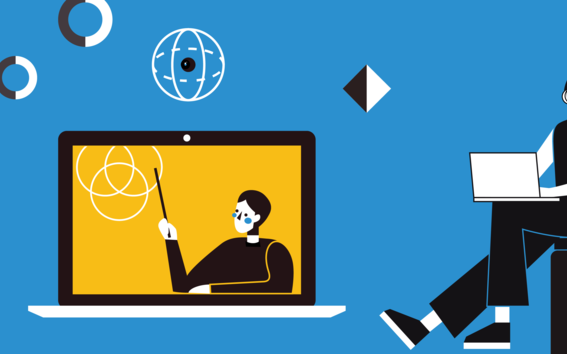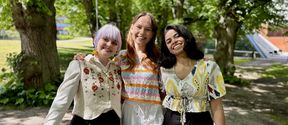Set and communicate clearly expectations for blended learning behaviors

Digitalisation is transforming higher education. Aalto University considered this a strategic challenge and launched in 2016 a five-year-project, Aalto Online Learning, to address it and reform its current educational culture.
‘The key results of the project are both new online learning resources for students, and dissemination of identified best practices and models into wider use for educators in all Aalto schools and units. These will facilitate the creation of engaging online/blended courses and learning experiences for our own students and lifelong learners,’ tells the Aalto Online Learning project manager Tomi Kauppinen.
Drawing on the inspiration and support of the Aalto Online Learning initiative, the Bachelor’s Program in International Business (BScBA) at the Aalto Mikkeli Campus has conducted two projects. In the first, it took a close look at how it can benefit from blended teaching and learning while retaining its signature “high touch” classroom experience. In the second, it used those finding as the basis for planning and implementing the thoughtful and systematic expansion and development of blended learning at the Aalto Mikkeli Campus can best meet the needs of students, faculty, staff and other key stakeholders.
Program Director Joan Lofgren together with Professor of Marketing Dale Fodness from the University of Dallas, who has been teaching in Mikkeli for almost 30 years, recently ran a workshop open for all Aalto educators and learning developers about their experiences both to share what they have learned and to receive feedback and suggestions from their colleagues.
According to Program DirectorJoan Lofgrenfrom Mikkeli, the unique nature of the Program (3-week modules taught by visiting faculty from around the world) requires an equally unique approach by faculty to combine pedagogy and educational technology to achieve the right “blend”. The faculty are key to accomplishing blended learning goals in Mikkeli.
Stress blended learning behaviors in interviewing, hiring, onboarding, and evaluating
Professor Fodness tells that research from the first project showed that most faculty coming to Mikkeli to teach were already familiar with blended learning and educational technology from their home institutions and that the infrastructure and support for the educational technology needed for blended learning already existed at the Aalto Mikkeli Campus. Despite this, however, faculty integration of blended learning methods and educational technology in their courses was below that which was desired. While some faculty were actively innovating and practicing blended learning best practices in their courses, others were not making optimal use of the educational technology available.
‘Reasons for this could includegenerational differences regarding technology adoption, lack of familiarity with unique nature of Mikkeli program and resources available as well as unclear expectations regarding the use of technology to support the classroom experience. As a conclusion, we decided that our best approach would be to concentrate on clearly and consistently communicating expectations to new and continuing faculty for blended learning behaviors in Mikkeli – stressing them in interviewing, hiring, onboarding, and evaluation. Additionally, we needed to provide “self-service” faculty development resources to illustrate and support those behaviors’, he says.
In the workshop, Program Director Lofgren and Professor Fodness shared and facilitated discussion around key components of their ongoing work at the Aalto Mikkeli Campus. These include:
- The development of a clear, concise and compelling statement of what blended learning looks like at the Aalto Mikkeli Campus, why it is important and how it is accomplished.
- A gap analysis focusing on the current and desired state of blended learning and educational technology adoption and use in Mikkeli, along with key metrics for monitoring.
- Development of the first-ever shared online networking resource for Aalto Mikkeli Faculty, the Mikkeli Faculty Collaboratory, currently being developed and beta-tested as an Aalto Wiki site.
If you could not participate in the workshop held on 28 November in Väre building, but would like to learn more about blended learning and teaching, please contact Joan Lofren at [email protected], Dale Fodness at [email protected] or Tomi Kauppinen at [email protected] and check https://onlinelearning.aalto.fi/ for upcoming events.
Text: Terhi Ollikainen
Read more news

Online AI course could boost study equality
Students at the School of Business believe that mastering Artificial Intelligence (AI) can be beneficial for both academic success and career prospects, as AI becomes increasingly integrated into daily life.
2 027 new students admitted to Aalto University’s Finnish, Swedish bachelor’s programmes
13 500 applied to Aalto University in Finland's spring joint application in 2024
Meet the the Program Assistants that elevate the Aalto University Summer School experience for 250 students from all over the world
Each year, the Aalto University Summer School has grown its operations and course curriculum tremendously.